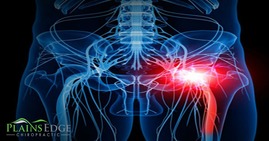 A small muscle located deep in the buttocks, the piriformis muscle performs the essential function of rotating the leg outwards. Piriformis Syndrome is a painful condition that occurs when the piriformis muscle is tight and intrudes upon the sciatic nerve in the buttocks. Causing pain and tenderness and sometimes numbness in the buttocks, piriformis syndrome pain may also radiate down the sufferer's leg, and in some cases, even into the calf. There are two commonly identifiable potential causes for piriformis syndrome. One is sitting for prolonged periods of time, which can cause tightening of the muscle. The second cause is an injury to the buttocks, either by a fall, an accident, or a sports injury. Trauma causes the piriformis muscle to swell and irritate the sciatic nerve. Spasms can also cause piriformis syndrome, however, the underlying cause of the spasms frequently remains unknown. Unfortunately, once an individual has suffered from piriformis syndrome, the condition can recur periodically, usually brought on by too much exercise or sitting for a long time without stretching. Whatever the initial cause, piriformis syndrome treatment options are vital in relieving the painful symptoms and healing the condition. These four treatment options are frequently used to treat piriformis syndrome. Medication. Over-the-counter or prescribed pain medicines, anti-inflammatory drugs, or muscle relaxers frequently serve to reduce the pain from piriformis syndrome. A doctor may also inject medicine directly into the piriformis muscle to improve the condition. Heat. A common way to relax tight muscles is to apply heat. Piriformis syndrome sufferers may find relief from painful symptoms by periodically applying heat directly to the tender area. Heat therapy may relieve the tightness of the muscle and promote healing of the entire area. However, it's important to avoid treating the muscle with heat if there is a chance the muscle may be torn. Exercise. The overall cause of the condition is a tight piriformis muscle, so it stands to reason a proper exercise regimen will loosen the muscle and alleviate the symptoms associated with piriformis syndrome. A doctor can prescribe the correct exercises to stretch and subsequently strengthen the muscles and the body's other muscles. A strong body will reduce the chances of the issue recurring down the road. Hands on therapy. Used with other types of treatment or on their own, these types of therapies are popular because of their effectiveness, as well as the fact they are drug-free ways to gain relief from the pain. Massage is a commonly used therapy for piriformis syndrome, as it helps increase blood flow to the area. The massage therapist can manipulate the area to relieve the tightness of the muscle. Another hands on therapy that produces positive results is chiropractic care. Chiropractors view the body in its entirety, and will often treat other parts of the body, such as a foot or leg, in order to improve the condition of the piriformis muscle. They may also utilize a regimen of pelvic and spinal adjustments along with joint manipulation and stretching to loosen up the muscle and help heal the afflicted area. As stated earlier, once the condition has been controlled and the area has healed, it's vital to take precautions to avoid re-aggravating the area. Proper stretching before exercise, periodic breaks when sitting, and maintaining spinal and pelvic alignment will increase an individual's chances of living free of the pain of piriformis syndrome in the future. If you have a question about how chiropractic care can help with the symptoms of piriformis syndrome, or other health conditions, contact us today. |
AuthorDr. Andy Johnson Categories
All
Archives
June 2018
|
HoursM-T: 9am - 5:30pm
Fri: 9am - 12pm |
Telephone605-262-0303
|
|


 RSS Feed
RSS Feed